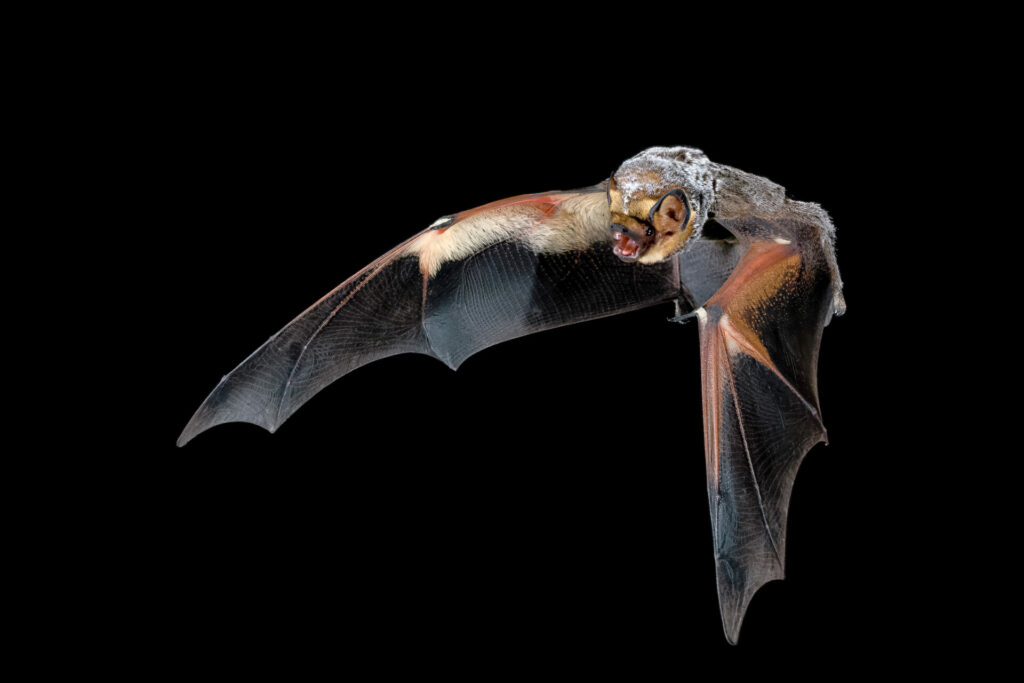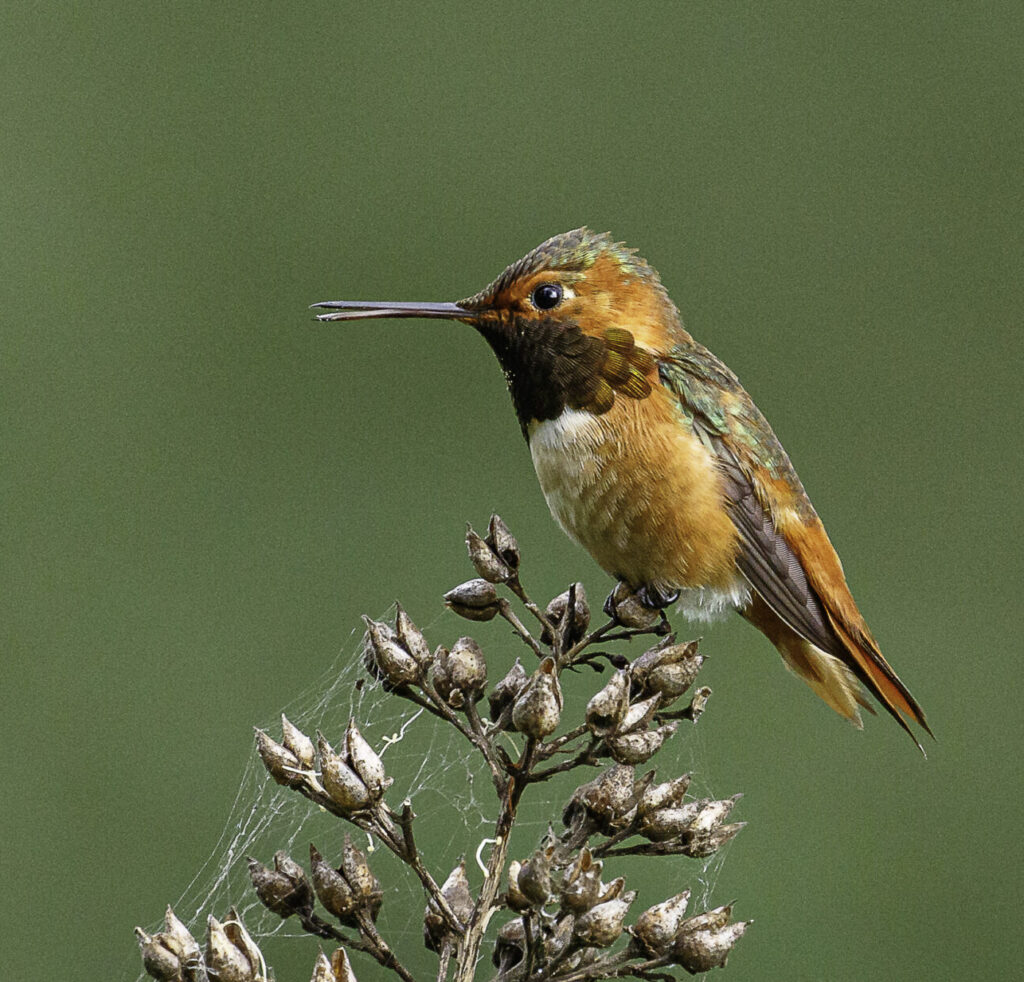The Night Shift: Bats Need Our Help
By Whitney Grover

Halloween gives us the opportunity to think about all those spooky nocturnal creatures we often forget. Birds get a lot of love throughout the year, so as we deck our houses with spider webs and skeletons, stock up on candy, and don our costumes, let’s turn our admiration to the mysterious critters that take to the skies just after our songbirds tuck in for the night: Bats!
Bats are a critically important part of California ecosystems. Like birds, they provide many ecosystem services, namely pest insect control. We have an incredible 16 species of bats in the Bay Area. Unlike birds, we know little about their population sizes and distribution; but we know enough to see that bats are under threat. They face some of the same challenges as birds: habitat loss, decreased abundance of insects, predation from cats, and collisions with wind turbines. Additionally, they face unique threats like White-nose Syndrome, an introduced fungal disease which has killed many millions of hibernating bats since it was first discovered in a cave in New York in 2007. Bat Biologists are tracking the spread carefully, and so far the fungus has not been found in the Bay Area, but was recently discovered in California.
In the Bay Area we do have wind turbines, which are particularly dangerous for the bat species that migrate. Roughly one million bats are killed from wind turbines in North America every year. There are two long distance migratory bats in Northern California: Hoary Bats and Silver-haired Bats. The Hoary Bat is common in the Bay Area and this species is of particular concern in the Altamont Pass Wind Energy Area. I sat down with Michael Whitby, Director of the Bats and Wind Energy Program at Bat Conservation International to learn more about how Hoary Bat populations are being affected by wind turbine collisions, and what we can do to help them.
Whitby was drawn to studying bats early in his career as an undergraduate student. Bats are mysterious animals, only active at night, and difficult to study. It’s no wonder we know so little about them, but Whitby was compelled by the challenging nature of the work. Part of the challenge and the fun of studying bats is the use of new technologies. Much of what we do know about bats is from acoustic detection and other modern and emerging technologies. Using genetic studies, we have learned that the Hoary Bats in North America can be seen as one large population, where threats facing Hoary Bats in one area of the continent will affect the full population. And we do know that the level of mortality from wind turbine collisions is having population level impacts on Hoary Bats.
The need for wind energy is undeniable, it’s an important part of our renewable energy future and a necessary tool for reducing our greenhouse gas emissions. But we need to plan and operate wind energy areas, using the best available science, to mitigate the worst impacts to bats, birds, and other wildlife. But what does that mean for bats?
One of the challenges with bats and collision risk is that bats, especially Hoary Bats, are actually attracted to wind turbines. We know they are drawn closer to the turbines and their spinning blades but we don’t yet know why. So the first best thing to reduce the risk of bat collisions is to avoid areas with high bat activity when siting wind energy areas and turbines. But once the turbines are placed and in operation, it’s not too late to make changes that will save bat lives. The next best thing is to “feather” the blades when the wind is so low that the turbines are not generating energy. “Feathering” the blades simply means turning them to an angle where the wind won’t catch the blades to move them around the rotor. Sometimes wind energy companies will allow the blades to continue rotating slowly, even when the wind is low and the turbine is not spinning fast enough to generate energy. This simple step can reduce bat collisions by 30%, without having an impact on energy generation.
The final action wind energy companies can take is curtailment during periods of high risk. Curtailment is the act of feathering or stopping the turbine from rotating during certain low wind conditions or times of year. For bats on migration, July through September, from sundown to sunrise, and low wind nights are the most dangerous. While curtailment does reduce the amount of energy being generated, it can have significant reductions in the amount of bats killed by collision. Whitby and his colleagues looked at all the available collision research over the last 10 years and published a metastudy in 2024 showing that using a cut-in speed (the lowest wind speed that will start blade rotation and energy generation) of 5 meters per second reduced bat collisions by an average of 62%.
While bats still face significant existential threats, there are glimmers of hope on the horizon. The Altamont Pass Wind Energy Area is somewhat ahead of the game in taking the findings of studies and research like this and incorporating them from the get-go. Often, wind-energy companies spend several years doing an expensive curtailment study before implementation; however, since we know curtailment works, the latest approved projects have skipped the study and gone right to curtailment, monitoring, and adaptive management strategies based on determined mortality threshold.
In addition to our ongoing advocacy in the Altamont, there are things you can do right at home that will help bats. And it’s not surprising that what’s good for birds is what’s good for bats: planting native plants! Native plants and trees provide roosting opportunities and support the insects bats need to survive. Bat Conservation International partnered with California Native Plant Society to create a filter in Calscape to find the plants for your yard that will also support bats. Additionally, they have a guide to attracting bats to your backyard here. We can all do our part to care for the night shift pest controllers and pollinators.
Thank you to Michael Whitby for sharing your bat expertise with the bird community!
If you’d like to learn more about our local bats, check out our last Speaker Series with Corky Quirk
Whitney Grover is the Director of Conservation for Golden Gate Bird Alliance. She participated in the 2019 Master Birder class and is a co-founder of the SF Bay chapter of the Feminist Bird Club.

